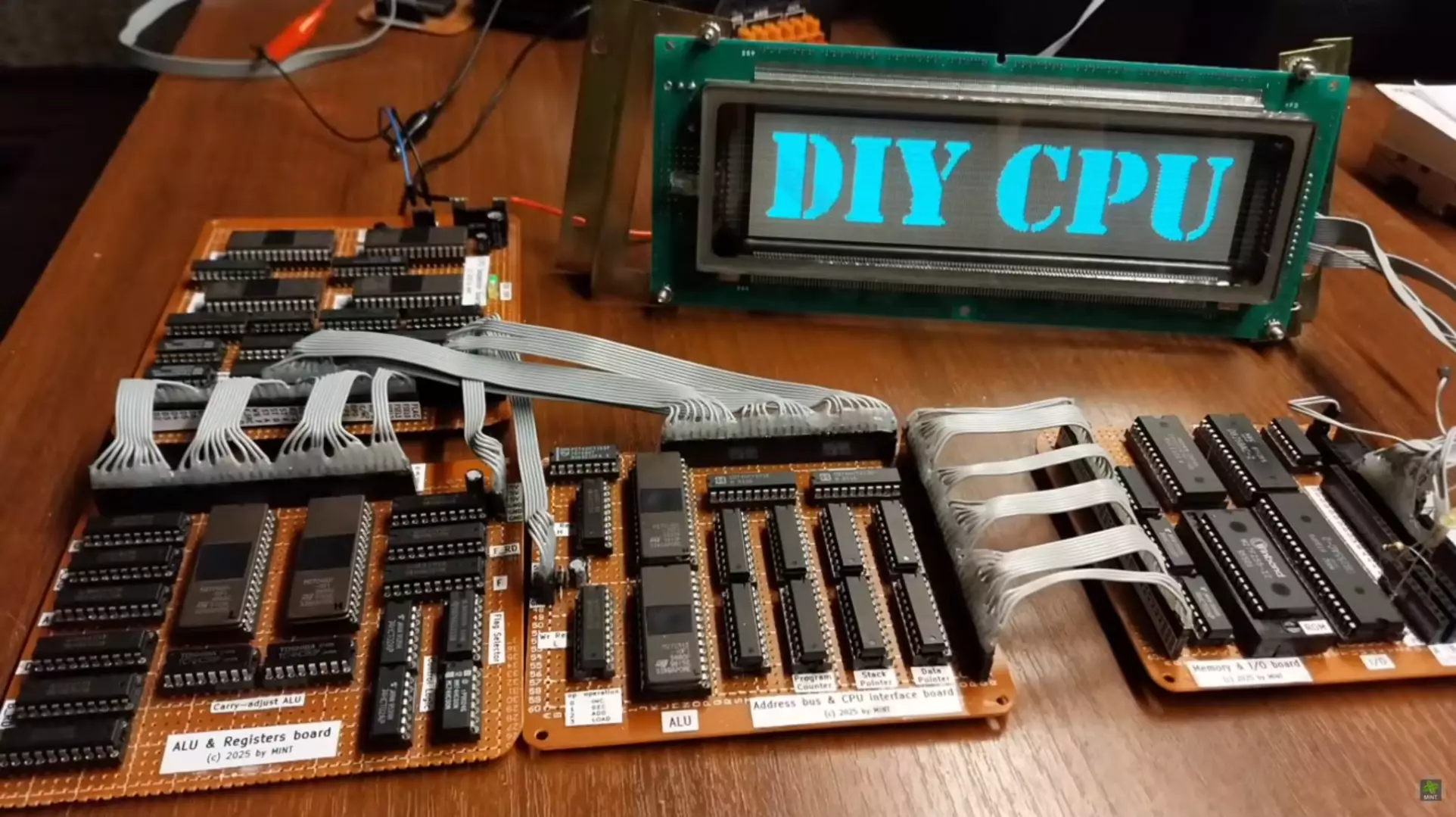In a world dominated by sleek, pre-built computers, the notion of constructing your own processor might seem like an unattainable feat reserved for engineering professionals or colossal tech corporations. Yet, recent efforts by an ingenious enthusiast have shattered that preconceived barrier. With patience, curiosity, and a detailed understanding of vintage technology, this individual crafted a fully operational CPU entirely from scratch. This project isn’t just an amusing stunt; it’s a testament to the relentless human desire to understand and recreate the complexities of modern computing from the ground up. Building a CPU by hand, especially one modeled after the iconic 8-bit processors like the Zilog Z80, exemplifies a passion for retro technology and an ambition to demystify the machinery that underpins contemporary digital life.
Transforming Old Components into a Functional Brain
What sets this project apart is its foundation in nostalgia and resourcefulness. The creator, known as MINT on YouTube, began his journey by scouring the depths of retro hardware. Old memory chips, once deemed obsolete, became the building blocks of his miniature processor. His initial experiments with these discarded components revealed a simple truth: what was once considered useless could be repurposed into something remarkably sophisticated with enough ingenuity. Over approximately three months, he meticulously assembled a functioning 8-bit CPU, soldering tiny parts and programming logic that allowed the device to perform meaningful operations.
This leap from mere experimentation to fully-fledged hardware illustrates how technological creativity isn’t reserved solely for scientists with large budgets or institutional backing. Instead, it emphasizes that with dedication and a mastery of fundamental principles, even hobbyists can breathe life into archaic electronics, transforming them into cutting-edge demonstrations of how early microprocessors operated.
The Educational Power of Hands-On Engineering
The real allure of MINT’s project lies in its educational potential. His detailed documentation—including a half-hour video deeply exploring each stage—serves as an accessible blueprint for tech enthusiasts eager to delve into computer architecture. Building the CPU provided him the opportunity to understand core concepts: how logic gates collaborate, how memory interacts with processing units, and how instructions are decoded and executed. These insights deepen an appreciation for the intricate dance of electrons and transistors that powers every modern device, emphasizing that understanding begins with dismantling.
Furthermore, programming the CPU to perform a simple task—playing scenes from The Matrix on a VFD display—demonstrates a tangible outcome of his labor. Despite its pixelated visual style, the fact that a self-made microprocessor can handle such a task is nothing short of inspiring. It challenges the notion that advanced computing is only accessible through massive investments; instead, profound learning and experimentation are within reach for those willing to invest time and effort.
The Significance for the Future of DIY Tech
More than an impressive technical feat, this endeavor is a philosophical statement about empowerment in the digital age. Building a CPU from scratch proves that fundamental computing principles can be rediscovered, reinterpreted, and repurposed by anyone—no matter their background or resources. It pushes the boundary of what’s considered possible within the framework of DIY electronics, inspiring a new generation of tinkerers to look beyond commercial solutions and into the raw mechanics of how computers actually function.
Such projects also ignite discussions about sustainability and recycling, demonstrating that old hardware still harbors untapped potential. It’s a reminder that technological progress doesn’t always mean discarding the familiar; sometimes, it involves reimagining the old with fresh eyes. Whether for education, hobby, or curiosity, creating a CPU from scratch promotes an intimate relationship with technology—one rooted in curiosity, patience, and a deep understanding of its core workings.
In conclusion, the act of building a processor by hand isn’t merely an act of engineering; it’s a bold statement about human perseverance and the democratization of knowledge. As DIY computer architecture gains popularity, it could lead to a future where understanding and creating fundamental components become accessible to all, fostering a new wave of innovation driven by curiosity and a profound appreciation for the roots of computing technology.

